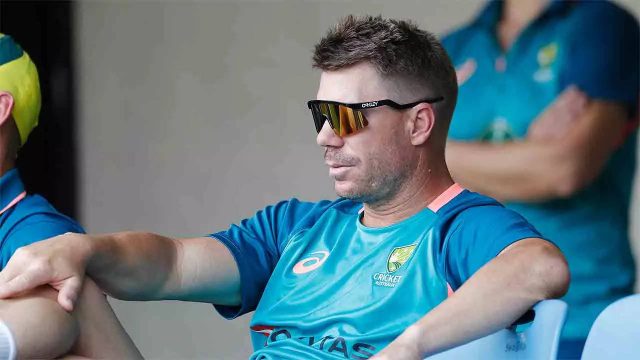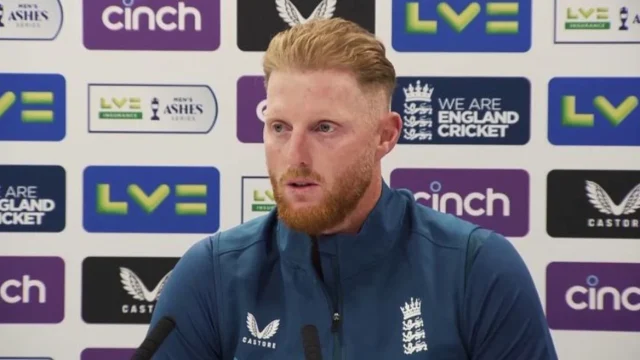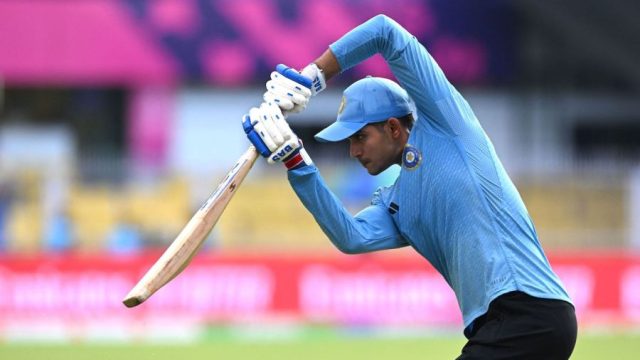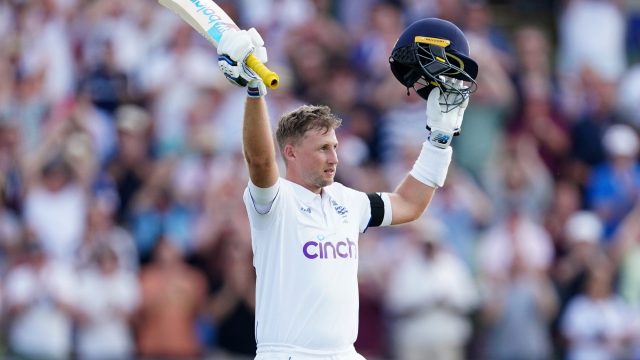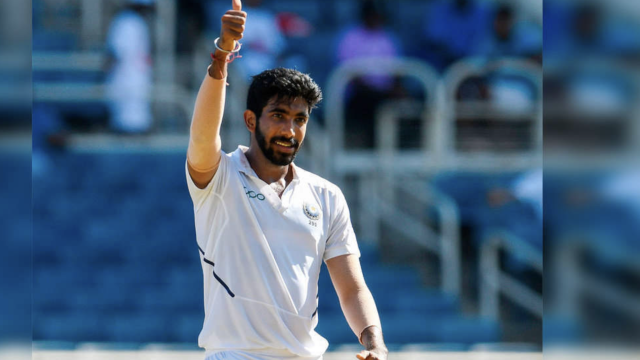Is There Wood In A Cricket Ball? Debunking Common Myths
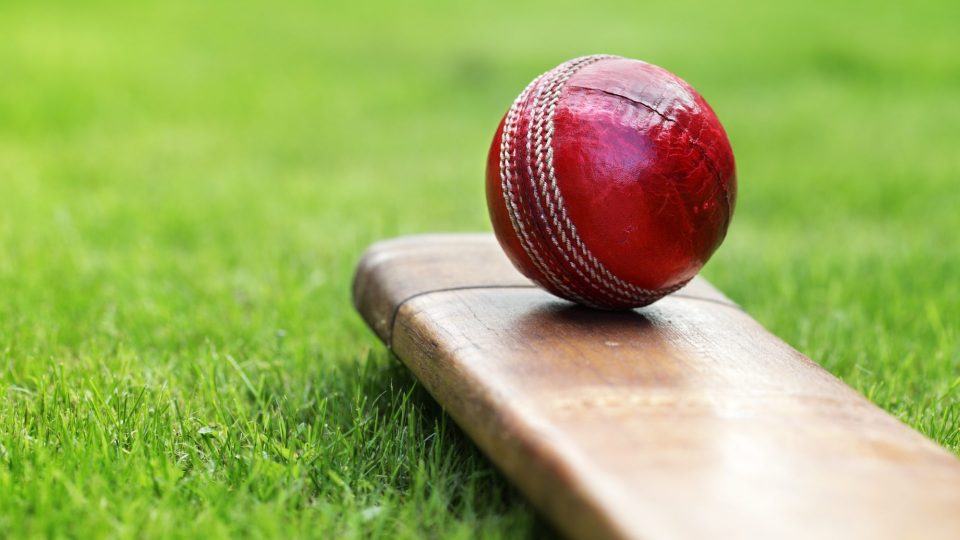
Is there wood in a cricket ball? The answer is no. Cricket balls are traditionally made from cork, rubber, and leather. A cricket ball’s core is crafted from cork, which provides the bounce and hardness necessary for the sport. This cork core is then layered with tightly wound string to maintain its shape and density.
The outer layer of the ball is made from high-quality leather, cut into four pieces that are stitched together to create the ball’s distinctive seam. This leather covering is responsible for the ball’s wear characteristics and aerodynamic properties. While the manufacturing process of a cricket ball is precise and designed to meet strict standards in terms of weight and size, there is no use of wood in any part of a standard cricket ball’s construction.
Composition and Structure of a Cricket Ball
The cricket ball is a complex object, consisting of a core made from cork and a durable outer cover. It is designed to withstand the impact of being bowled at high speeds and the wear from the cricket pitch.
Core Materials
Cork Core: At the heart of a cricket ball is a cork core. The core may also incorporate rubber to enhance durability and maintain shape.
- Weight: A cricket ball must have a weight range of 155.9 to 163 grams.
- Circumference: The circumference should measure between 22.4 and 22.9 centimeters.
Outer Layers and Cover
String/Yarn Layers: Surrounding the cork core, multiple layers of tightly wound string or yarn build up the ball’s structure. This layering affects the ball’s bounce and hardness.
Leather Cover:
- Structure: Two hemispheres of leather are stitched together to form the outer covering. The seam is slightly raised.
- Finish: The leather is generally dyed red for Test matches and white or pink for limited-overs matches. A finish of nitrocellulose lacquer is applied to add shine and strength.
Manufacturing Process
The construction of a cricket ball is a refined process that involves multiple stages to ensure consistent performance and durability. Specific materials and techniques are employed to create its distinct characteristics.
Forming the Core
The core is the beginning of the manufacturing process, which gives the cricket ball its fundamental structure and bounce. The core is typically made from cork, which is layered with tightly wound yarn. This combination is vital in maintaining the ball’s shape and providing the necessary hardness.
Stitching and Finishing
Once the core is prepared, the next phase is encapsulating it within the outer leather shell. The leather is typically dyed a specific color, commonly red for Test matches or white for limited-overs games. The leather pieces are cut into four quarters and then stitched together by hand to form a hemisphere. Two hemispheres are stitched around the cork core, creating the final spherical shape. The seam of the ball is a crucial feature, prominently raised to assist bowlers in gripping and spinning the ball. After stitching, the ball is polished to enhance its appearance and aerodynamics. This polish, along with the quality of the stitching, contributes significantly to the ball’s performance during a match.
Variations and Specifications
In this section, we examine the different variations of cricket balls and their specific regulations, focusing on their color, type, size, and weight. These characteristics are essential as they directly influence the gameplay and behavior of the ball during a cricket match.
Colors and Types
Cricket balls are traditionally available in three colors: red, white, and pink. The red ball is used in test cricket due to its better visibility in daylight and durability over long periods. For limited-overs matches like one-day internationals (ODIs), a white ball is preferred for its visibility under floodlights. Pink balls have been introduced for day-night test matches, ensuring visibility during both day and twilight conditions. Manufacturers such as Kookaburra, Dukes, and SG produce cricket balls with varying characteristics, with quality and performance of each adhering to strict regulations.
Size and Weight Regulations
Cricket balls must conform to specified regulations regarding their size and weight to ensure a consistent playing experience across all formats of the game.
Men’s Cricket (age 13 and above):
- Weight: 5.5 to 5.75 ounces (156 to 163 grams)
- Circumference: 8.81 to 9 inches (224 to 229 millimeters)
Women’s Cricket (age 13 and above):
- Weight: 4.94 to 5.31 ounces (140 to 151 grams)
- Circumference: 8.25 to 8.88 inches (210 to 226 millimeters)
These balls must demonstrate a standard level of bounce and hardness. Regular checks and measures are in place to maintain the shape and quality of the cricket balls used in professional matches.
Performance and Maintenance
In the sport of cricket, maintaining the condition of the ball is key to performance, including its ability to swing, and ensuring its longevity throughout the game.
Swing and Aerodynamics
The swing of a cricket ball in flight is influenced by its condition. A well-maintained ball has a pronounced seam that aids bowlers in generating swing. Polishing one side of the ball while allowing the other to become rough can enhance the swing. The state of the ball’s surface, including the shine, directly impacts its aerodynamics. A smooth, shiny surface on one side and a rougher one on the other aid in producing differential air resistance, leading to swing which can be the deciding factor in key moments of play.
Care and Lifespan
The lifespan of a cricket ball depends on its care. The leather case of a cricket ball is treated with a nitrocellulose lacquer to offer water resistance and maintain the ball’s quality. Durability is also a function of how the ball is stored and handled. Regularly polishing the ball with appropriate materials during the game preserves its condition, thus allowing for consistent performance. After play, storing the ball in a dry, cool place ensures it does not degrade due to moisture or heat, extending its usability for future matches.
Cultural and Historic Significance
The cricket ball holds significant cultural relevance in the sport’s history, especially within countries where cricket is deeply woven into the fabric of society such as England, Australia, and India. The game’s beginnings can be traced to England, where it evolved from a children’s pastime to a structured adult sport. The first known game of cricket was played in the southeast of England and by the end of the 17th century, it had become an established sport.
England is credited with formalizing the game’s rules, with the Marylebone Cricket Club (MCC) founded in 1787, playing a central role. The MCC’s Lords ground in London is acclaimed as the “spiritual home of cricket”.
In Australia, the sport carries a similar heritage with Cricket Australia governing top-level cricket. In the late 20th century, Australian media tycoon Kerry Packer established World Series Cricket, leading to significant changes in the game including the introduction of night matches and colored clothing, contrasting with the traditional all-white attire used in Test cricket and first-class cricket.
India‘s affinity with cricket has turned the sport into an enormous aspect of its identity. This subcontinent has developed fervent support for the game, often reflecting national pride, and its cricket board, the BCCI, stands as a powerful entity in international cricket politics.
Cricket balls, traditionally red for Test cricket and first-class cricket, have also been central to the cultural shift within the sport. For example, the advent of white cricket balls facilitated the transition to one-day matches and night games, expanding the spectacle of the game and altering its visual culture.
Best Cricket Balls To Buy
Cricket is a sport deeply embedded in the culture and history of numerous countries around the world. The cricket ball is at the center of the game, a dense and hard sphere that bowlers deliver to batsmen with various speeds and techniques. Made from a core of cork, layered with tightly wound string, and covered by a leather casing, the cricket ball is designed to endure the rigors of a long match while providing consistency in bounce and aerodynamics.
While the red ball is traditional for Test cricket and longer formats, limited overs cricket has popularized the use of the white ball, and more recently, pink balls have been introduced for better night visibility in day-night Test matches. The choice of ball can affect the game significantly, considering factors such as how well it can be seen under lights or how it ages over the course of play.
When selecting a cricket ball, the type of match and playing conditions must be considered. Balls vary in their construction and quality, which can influence their longevity and behavior on the pitch. For instance, a ball with a pronounced seam may offer bowlers more swing and grip. The weight and size of the ball are governed by cricket regulations, but slight variations within these parameters can also affect performance. Durability, cost, and maintenance (such as polishing and protecting the ball’s condition during play) are practical considerations.
Our comprehensive examination of various cricket balls includes field testing and direct feedback from seasoned players to find options that deliver reliable performance and value. We understand the subtle yet significant impact that a high-quality cricket ball can have on the game, whether it’s a competitive match or a training session.
In our search for the best cricket balls, we have carefully selected products that are known for their durability and performance. Cricket enthusiasts understand the importance of a good cricket ball, which is why we’ve taken into account factors like material quality, stitching, and overall craftsmanship. Whether you’re practicing or competing, the right ball can significantly influence the game. Our list aims to assist players at all levels in finding the cricket ball that suits their needs on the pitch.
SG Shield 20

Cricket enthusiasts should consider the SG Shield 20 for its solid performance in club and practice matches.
Pros
- Consistent performance in various weather conditions due to its water-proofing
- Solid construction with a grade 2 core ensures durability
- Quality alum tanned leather offers a genuine cricket ball experience
Cons
- Some users experienced durability issues during intense play
- Higher cost compared to some other options can be a deterrent
- Limited customer reviews may make it hard to gauge long-term reliability
Having recently taken the SG Shield 20 for a spin in the nets, our first impression was quite positive. The water-proofing stood out immediately; even in damp conditions, the ball maintained its integrity. It swung through the air reliably, and its bounce was consistent—a vital aspect for practicing those tricky spin deliveries or perfecting the yorker.
In the grueling sessions that followed, we noticed the robustness of the grade 2 core. The ball didn’t lose shape, a testament to its machine-stitched construction. Even after hours of playing, the alum tanned leather retained its look and feel, which speaks to the craftsmanship of the SG Shield 20.
However, a teammate pointed out that, with a price point on the higher side, there was an expectation for unmatched durability. While our experience was mostly positive, several robust fast-bowling spells later, the outer covering showed signs of wear. It’s a reminder that while the SG Shield 20 seems fit for club-level play, it might not withstand the highest levels of competitive stress.
As we wrap up our time with the SG Shield 20, I’d say its performance is admirable for practice sessions and less intensive matches. Just be mindful of its limitations if planning to use it in more demanding scenarios. Remember, a good cricket ball can significantly aid in honing your technique, and the SG Shield 20, despite the few downsides, could be a solid addition to your kit bag.
Practice Cricket Balls

If you’re serious about improving your batting and fielding, these cricket balls offer a realistic training experience without the risks associated with harder balls.
Pros
- Well-crafted for realistic training
- Safe for all ages and skill levels
- Durable construction ensures long-lasting use
Cons
- Not suitable for official matches
- Limited to white color only
- May not replicate the exact feel of professional cricket balls
During our last practice session, we felt an immediate difference while using these soft PVC cricket balls. Designed to emulate the real deal, their bounce and pace added a level of authenticity to our training drills. The hand-stitched seam provided a good grip, crucial for mastering the art of spin and swing bowling. After an intensive batting practice, we appreciated the ball’s safe material, which reduced the chance of injury for younger players just getting to grips with the sport.
As we switched from batting to fielding, it became clear that the quality of these balls had been thoughtfully considered. They stood up to repeated use and showed no signs of wear, even after a rigorous fielding session. This is a testament to their durability, making them a cost-effective option for individuals and cricket coaches alike.
Admittedly, while these balls are excellent for honing our skills and building confidence, they won’t completely replace the traditional leather cricket balls used in formal matches. However, for our training purposes, they’ve proved to be an invaluable addition to our cricket gear. Their performance during both indoor and outdoor practice sessions enhanced our overall experience, enabling us to train effectively regardless of the setting.
BT Cricket Ball Expert

Cricket enthusiasts would find the BT Cricket Ball Expert to be a solid choice for practice sessions with its durable build quality.
Pros
- Maintains shape through intensive play
- Suitable for various bowling styles
- Crafted from environmentally sustainable sources
Cons
- Coating may chip off over time
- Not the prime choice for professional matches
- Some users report issues with the ball’s shape and seam
After a few sessions in the nets, we’ve noticed the BT Cricket Ball Expert does live up to its promise of longevity. Its ability to retain shape after numerous hard hits was impressive. We appreciated how the ball’s construction supported different bowling techniques, a benefit for those in our team who like to mix up their play.
However, we’ve seen that with continuous use, particularly on rough surfaces, the outer coating can start to show wear. It’s not a significant drawback for practice, but something to keep in mind.
While the balls are marketed as match-standard, our experience suggests they’re more suited to practice or casual play. We’ve encountered mixed feedback in this regard—some of us were pleased with the performance during friendly matches, while others prefer a more specialized match ball.
The commitment to sustainability caught our attention. It’s becoming increasingly important to support products that consider environmental impact, and we’re glad to see BT Cricket Ball Expert taking a step in the right direction.
For a club looking for cost-effective practice balls that mimic match conditions, these are a recommendable choice. They’re not without their flaws, but they offer a good balance between performance and price.
Mozi Sports Leather Cricket Ball

We recommend trying this cricket ball for its reliable performance and lasting durability.
Pros
- Maintains shape and shine even after rigorous use
- Well-constructed and suitable for competitive matches
- Great value for its quality
Cons
- Size may not meet everyone’s expectations
- Some issues reported with unevenness
- Durability may vary between balls
Having taken the Mozi Sports Leather Cricket Ball out for a spin in the nets, we immediately noticed its sturdy construction. Its ability to maintain shape and shine even after hours of batting practice impressed us—this ball is made for those who take their cricket seriously.
Use during a recent match demonstrated the ball’s match-grade readiness. We found the grip comfortable, and the weight felt just right for senior-level cricket. The seamless experience enhanced our game, and we could confidently play a wide array of shots, from forceful drives to delicate cuts.
While most of the feedback among our team was positive, we did hear a couple of concerns. A teammate pointed out that the ball seemed smaller than he was used to, which took some adjustment during his batting session. Additionally, there was a mention of an odd one being uneven, but this was more of a rare miss than the standard.
We conclude that the Mozi Sports Leather Cricket Ball is capable and dependable, perfect for cricketers looking to make the most out of their practice sessions or matches. Its affordability matched with superior construction makes it a wise choice for both casual and serious players. The occasional variance in quality is noted, but overall, this ball holds up to rigorous play. If you’re in search of solid performance without breaking the bank, this ball could very well be your next purchase.
AnNafi Red Cricket Ball

For those in need of a durable practice cricket ball, the AnNafi Red Cricket Ball offers a good experience with a few caveats to consider.
Pros
- Well-constructed with high-quality leather
- Bright red color enhances visibility during play
- Suitable for a variety of cricket formats
Cons
- Some units may have a lingering unpleasant odor
- The quality of the leather may be inconsistent
- Reports of the product arriving with aesthetic damage
Having recently taken the AnNafi Red Cricket Ball to the field, we were pleased with its performance. The contrast of the red leather against the pitch made it easy to spot, even during an intense session.
During practice, we noticed the ball maintained its shape and offered a consistent bounce, which is crucial for honing skills. Perfect for extended outdoor sessions, it seemed to handle the rough play quite well.
However, we did come across an issue with an unusual odor, which was a bit off-putting initially. Some of the balls also displayed signs of wear, such as scuffs and slight cracks, right out of the box, which was disappointing when expecting a brand new product. Despite this, its affordability might make it a suitable option for casual practice.
Pro Impact Club Play Leather

If you’re serious about cricket, this ball offers the professional feel necessary for quality play.
Pros
- Holds up well with extended use
- Maintains shine for a satisfactory period
- Good value for its price point
Cons
- Occasional unevenness in stitching
- Susceptible to cracking with very heavy use
- String quality could be improved
Holding the Pro Impact Cricket Ball, you immediately notice its solid construction. The hand-stitched seams provide a confident grip, a hint at the careful crafting that goes into each ball. After several rigorous sessions in the nets, the durability of the leather is evident; it stands up well to the smack of the bat and repeated impacts with the pitch.
In use, its performance is consistent. Bowlers will appreciate the bounce and swing they can achieve, while batsmen enjoy the ball’s reliable response off the bat. It truly brings a professional edge to training sessions or competitive matches.
Of course, no cricket ball is indestructible, and after substantial use in various conditions, the Pro Impact ball may show signs of wear. The lacquered shine does last, but like any natural product, it will diminish over time through continuous play.
We’ve applied this ball in several match scenarios, and it proves itself every time as a worthy component of any game. Whether it’s practice or a league match, it maintains a reliable performance, adding credibility to our kit. Overall, it’s a solid choice for both practice and competitive play.
SS Hanging Ball

For honing cricket skills without hitting the nets, this hanging ball is a solid choice.
Pros
- Enhances batting technique
- Durable and handles wear well
- Can be used anywhere
Cons
- May seem expensive for some buyers
- Lighter weight than some may prefer
- String can be short for some setups
On receiving the SS Hanging Ball, the first thing we noticed was how this clever device could slot seamlessly into our practice routine. It’s readily apparent how its design is particularly geared towards improving batting precision, and after a few swings, we recognised its potential for sharpening reflexes.
During extended practice sessions, we appreciated the product’s resilience. The ball can certainly withstand a good amount of knocks. Moreover, the visibility of the red leather against a variety of backgrounds made for clear sighting, essential for fine-tuning our batting skills.
However, no product is without its critiques. For instance, the lighter weight may not exactly replicate the heft of a standard cricket ball during knocking practices, which could be a consideration depending on one’s training preferences. Nevertheless, with an overall promising review score and the benefits we personally experienced, the SS Hanging Ball remains a viable training aid.
BT White Cricket Ball

For cricketers at all levels seeking a reliable and responsibly made ball, the BT White Cricket Ball is a solid choice.
Pros
- Sustainably sourced genuine leather enhances durability
- Balanced softness aids in consistent play
- Precision stitching contributes to long-lasting performance
Cons
- May exhibit signs of wear in tough conditions
- Occasional surface imperfections
- Not the cheapest option available
After a splendid over at the nets with the BT White Cricket Ball, one thing is clear – it’s built for players who take the game seriously. The genuine leather promises a ball that not only lasts but also allows for a gripping contest between bat and ball. A crisp thwack off the bat reassures that the softness is ideal for rigorous drives and forceful hits, preserving both the ball’s shape and your bat.
Bowling with this ball feels rewarding. It’s hearty, fits snugly in the hand, and the shine remains steady, giving bowlers the tools needed to strategize their deliveries effectively. Its hand and machine stitching appears to hold no punches, implying that it can withstand many a fierce spell.
The BT White Cricket Ball holds its own in training sessions, as we noticed during a series of net practices and simulated match conditions. It promises a competitive edge suitable for various formats. And with sustainable leather use, eco-conscious cricketers can play with peace of mind, knowing that their sport is in harmony with environmental care.
Let’s not shy away from the other side of the coin. Some may find the ball a touch above their budget, and the finish isn’t immune to the challenges of abrasive surfaces. Indeed, after a tough session on a hard, gritty pitch, signs of wear can surface. However, given its performance, such trade-offs could be considered par for the course in the life of a cricket ball.
Despite some hurdles, our hands-on experience submits that the BT White Cricket Ball is a commendable option, deliberately fashioned for the sport’s aficionados. Whether it’s for the intense sessions under the sun or thrilling encounters under stadium lights, it’s engineered to do the job—and do it well.
Cricket Ball Buying Guide
Understanding Cricket Ball Types
We must first recognize that cricket balls come in different types suited for various formats of the game. For instance, training balls are lighter and designed for practice, while professional match balls are heavier and made to last longer.
Material and Build Quality
The material impacts the ball’s longevity and performance. Leather is commonly used for its durability, with a core made of cork and tightly wound string. The stitching, known as the seam, should be prominent and even, as it plays a key role in the ball’s aerodynamics and grip for bowlers.
Weight and Size Specifications
Official cricket balls must conform to certain weight and size standards. Men’s cricket balls weigh between 155.9 and 163 grams and have a circumference of 22.4 to 22.9 centimeters. Women’s and junior sizes differ slightly and will be lighter and smaller.
Condition and Maintenance
A good ball should retain its shape and condition over extended use. It’s essential to consider how well the ball can maintain its shine, as this affects swing and seam movements. Regular polishing with appropriate leather conditioners can extend a ball’s lifespan.
| Ball Type | Material | Weight | Use |
|---|---|---|---|
| Training | Synthetic | Lighter | Practice |
| Professional | Leather | 155.9-163g | Matches |
| Junior | Leather/Synthetic | Lighter | Junior Games |
Price vs. Quality
Investing in a high-quality ball often translates to better performance and longer life. Cheaper options may be suitable for casual play, but may not withstand the rigors of regular, intense cricket.
When selecting a cricket ball, prioritize balance between cost and the ball’s intended use. It’s advisable to opt for recognized standards of quality for competitive play to ensure fairness and consistency in the game.
Remember:
- Check weight and size to match the level of play.
- Assess stitching and material for good seam and durability.
- Ensure you have the right type for your format of cricket.
- Consider maintenance needs for long-term use.
Feature image courtesy Depositphotos.

